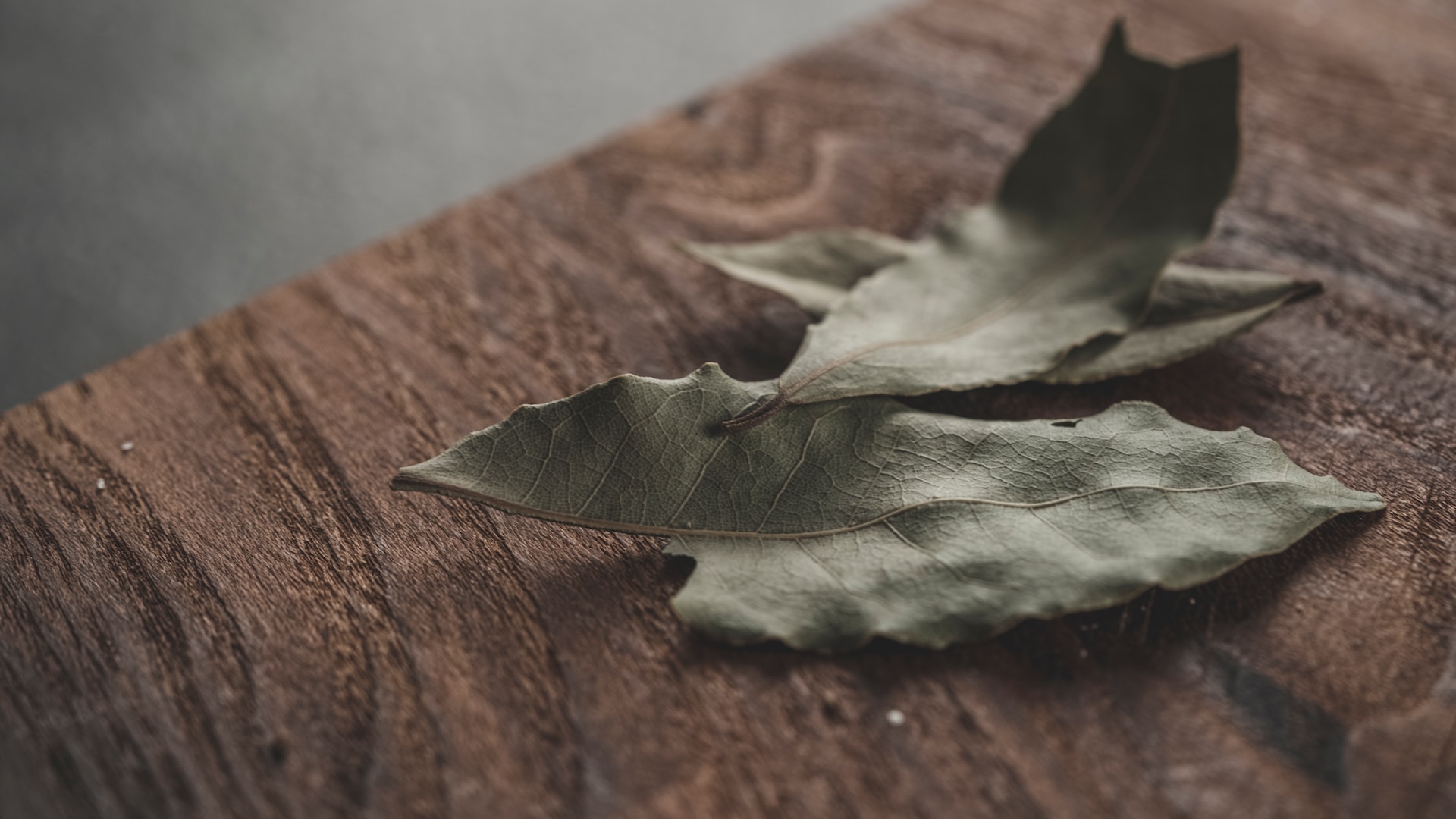
When it comes to cooking, many spices and ingredients hold a special place in our culinary repertoire. One such ingredient that often goes unnoticed but packs a punch of flavor is the humble bay leaf. These small, oval-shaped leaves come from the bay laurel tree and have been used in cooking for centuries. While they may seem inconspicuous, bay leaves have a rich history and boast an impressive range of benefits. From their use in traditional medicinal practices to their ability to enhance the flavors of various dishes, bay leaves have much more to offer than meets the eye. In this article, we will delve into 17 fascinating facts about bay leaves that will leave you amazed at the versatility and allure of this unassuming ingredient.
Key Takeaways:
- Bay leaves have a rich history and are packed with health benefits. They add depth and flavor to dishes and can even repel insects in your pantry.
- Bay leaves are not just for cooking – they have medicinal properties, promote hair health, and can even be used as a natural stress reliever. Plus, they make great wreaths for good fortune!
Origins of Bay Leaves
Bay leaves come from the Mediterranean bay tree, scientifically known as Laurus nobilis. This evergreen tree is native to the Mediterranean region and has been cultivated for centuries for its aromatic and culinary properties.
Ancient Symbolism
Bay leaves hold a special place in ancient mythology and folklore. In Greek and Roman cultures, bay leaves were associated with victory, honor, and protection. They were used to crown heroes, athletes, and scholars, symbolizing their accomplishments and achievements.
Aromatic Flavor
Bay leaves are known for their unique fragrance and flavor. They have a subtle, slightly floral aroma with hints of eucalyptus and citrus. When added to dishes, they impart a rich and earthy taste that enhances the overall flavor profile.
Cooking with Bay Leaves
Bay leaves are commonly used in soups, stews, sauces, and marinades. They add depth and complexity to slow-cooked dishes and are often used in Mediterranean, Indian, and Caribbean cuisines.
Medicinal Properties
Bay leaves have long been recognized for their medicinal properties. They contain essential oils with antibacterial and anti-inflammatory effects, making them beneficial for digestion, respiratory health, and even diabetes management.
Natural Insect Repellent
Bay leaves have a natural repellent effect on insects, particularly pantry pests like moths and weevils. Placing bay leaves in your pantry or storage containers can help deter these unwanted invaders.
Improving Digestion
Due to their high fiber content, bay leaves can aid digestion and help relieve digestive issues like bloating and constipation. Steep dried bay leaves in hot water to make a soothing tea that promotes a healthy digestive system.
Enhanced Hair Health
Bay leaves are believed to stimulate hair growth and improve the overall health of your scalp. Rinse your hair with bay leaf-infused water to help promote shiny, lustrous locks.
Antioxidant Powerhouse
Bay leaves are rich in antioxidants that help protect the body against free radicals, which can cause cellular damage and contribute to the development of chronic diseases.
Natural Stress Reliever
The aroma of bay leaves has a calming effect on the mind, making them a natural stress reliever. Infuse dried bay leaves in hot water and inhale the steam for a relaxing and soothing experience.
Bay Leaf Tea
Bay leaf tea has been traditionally used as a natural remedy for various ailments. It is believed to have diuretic properties, making it beneficial for kidney health and promoting detoxification.
Culinary Substitute
If you don’t have bay leaves on hand, you can use dried thyme or oregano as a substitute. While the flavors may differ slightly, these herbs can provide a similar aromatic touch to your dishes.
Bay Leaf Wreaths
In many cultures, bay leaves are used to create decorative wreaths. These wreaths are believed to bring good fortune, protection, and a pleasant aroma to the home.
Bay Leaves in Herbal Medicine
Bay leaves have been used in traditional herbal medicine to treat various conditions like arthritis, muscle pain, and even migraines. However, it’s important to consult a healthcare professional before using bay leaves for any medicinal purposes.
Different Varieties
While the true bay leaf comes from the Laurus nobilis tree, other plants are often referred to as bay leaves as well. These include the California bay leaf and the Indian bay leaf, each with their own distinct flavors and uses.
Drying Bay Leaves
Bay leaves are typically dried before use to concentrate their flavors. To do this at home, simply lay the leaves in a single layer on a baking sheet and let them air dry in a cool, dark place for about two weeks.
Storing Bay Leaves
To prolong the shelf life of bay leaves, store them in an airtight container in a cool and dry place. Proper storage will ensure that they retain their aroma and flavor for an extended period of time.
There you have it – 17 intriguing facts about bay leaves. From their ancient symbolism to their culinary and medicinal uses, bay leaves are truly a remarkable herb that deserves recognition in the kitchen and beyond.
Conclusion
In conclusion, bay leaves are much more than just a simple herb used for cooking. They have a rich history, health benefits, and interesting characteristics that make them a valuable addition to any kitchen. Whether you are using them to infuse flavor into your favorite dishes or taking advantage of their medicinal properties, bay leaves are a versatile ingredient that can enhance both the taste and health benefits of your meals.From their role in ancient civilizations to their ability to aid digestion, relieve stress, and support cardiovascular health, bay leaves truly are an underrated powerhouse in the culinary world. So next time you reach for those dried leaves in your pantry, remember that you are not just adding a subtle aroma to your recipes, but also incorporating a hidden gem of nature into your cooking.So go ahead and explore the myriad of flavors and benefits that bay leaves have to offer. Your taste buds and your body will thank you for it!
FAQs
1. What are bay leaves?
Bay leaves are the dried leaves of the bay laurel tree, scientifically known as Laurus nobilis. They are commonly used as a culinary herb to add flavor to various dishes.
2. How do I use bay leaves in cooking?
Bay leaves are typically added to soups, stews, sauces, and braises to infuse them with a subtle, aromatic flavor. They can be used either whole or ground, but it’s important to remove them before serving, as they are not meant to be eaten.
3. Are bay leaves only used for cooking?
No, bay leaves have various other uses apart from cooking. They have been used in traditional medicine to aid digestion, alleviate respiratory issues, and promote overall well-being.
4. Can bay leaves be used for medicinal purposes?
Yes, bay leaves possess certain medicinal properties. They contain compounds that have anti-inflammatory, antioxidant, and antimicrobial effects. However, it’s important to consult with a healthcare professional before using them for medicinal purposes.
5. Are bay leaves safe to consume?
Yes, bay leaves are generally safe to consume in small quantities. However, they should be used in moderation, as consuming large amounts may lead to adverse effects. It’s also important to note that some individuals may be allergic to bay leaves.
6. Can I grow bay leaves at home?
Yes, bay laurel trees can be grown at home in suitable climates. They require well-drained soil, ample sunlight, and regular pruning to maintain their shape. It’s best to consult a local gardening expert for specific instructions.
Now that you've learned fascinating facts about bay leaves, why not explore other culinary topics? Proper storage is key to maintaining food freshness, so consider investing in high-quality food storage containers. These versatile containers keep ingredients organized, making meal prep a breeze. With the right tools and knowledge, you'll be well on your way to mastering the art of cooking and food preservation.
Was this page helpful?
Our commitment to delivering trustworthy and engaging content is at the heart of what we do. Each fact on our site is contributed by real users like you, bringing a wealth of diverse insights and information. To ensure the highest standards of accuracy and reliability, our dedicated editors meticulously review each submission. This process guarantees that the facts we share are not only fascinating but also credible. Trust in our commitment to quality and authenticity as you explore and learn with us.


